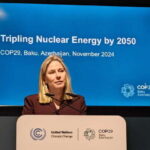OK – the headline is hyperbole. Even this old dog understands how to increase the probably of things being read. Sadly, style has eviscerated substance when it comes to what people are most inclined to view.
𝗥𝗶𝗴𝗵𝘁, 𝗜 𝘀𝗵𝗼𝘂𝗹𝗱𝗻’𝘁 𝗵𝗮𝘃𝗲 𝗮𝗱𝗺𝗶𝘁𝘁𝗲𝗱 𝘁𝗵𝗮𝘁 𝘂𝗽 𝗳𝗿𝗼𝗻𝘁.
You know what: If you don’t care about substance, stop reading immediately. My posts are not for you. I don’t care about style. What matters – and the only thing that should matter to people who want to consider themselves serious thinkers – is substance.
But I digress. On to the topic of the day.
Today’s post was prompted by a blurb that came across my desk from Heatmap news with the headline: Climate TRACE report lists most-polluting cities. Climate TRACE describes itself as a non-profit coalition of organizations building a timely, open, and accessible inventory of exactly where greenhouse gas emissions are coming from. The organization was co-founded by Al Gore.
I couldn’t find the city specific data. I’m sure it’s there somewhere, but it didn’t jump out. The Heatmap article identified Shanghai as the most polluting city in the world. No real surprise there. That is the paradox that is China. Despite dominating a multitude of clean energy sectors, China is also the world’s biggest polluter by far.
That in part is because of its massive population. According to the TRACE data, last year China was responsible for 17.2 metric tons of CO2e100 emissions. That is almost three times more than that emitted by the United States (6.68 MT CO23100), the world’s second largest polluter.
However, China’s population is four times that of the U.S., and on a per capita basis, the US emits almost twice as much as China – 20.14 versus 12.2. Combined, China and the US are responsible for approximately 40% of global emissions.
Although I failed to locate the city data, I did find interesting emissions data by industrial sector and by country. Today’s post summaries some of the data. And although the battle to reduce emissions is not lost, it isn’t going well.
As part of this post, I’ve included a couple of illustrations of how easy it is to use the same data to tell very different stories. I’m data-driven, but data can be manipulated and distorted. These examples show how easy it is to do. The morale of the story: don’t just look at the headline numbers, dig deeper into data to validate it.
𝗢𝗻𝗲 𝗹𝗮𝘀𝘁 𝗻𝗼𝘁𝗲: COP29 is in its second week. I paid very little attention to it and for good reason. It’s generally a waste of time. Late last year I did a series of posts on why COP is useless and how to fix it. In the spirit of COP, I’ll be republishing those posts this week and next.
#emissions #climatechangeisreal #carbonemissions #ghg #greenhousegas





